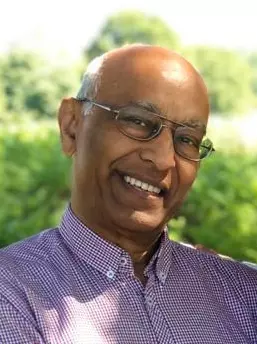In his latest book, The Rise and Fall of Muslim Civilization: Hope for the Future, Dr. Basheer Ahmed offers fresh insight as well as a fresh perspective on eight centuries Muslim history, focusing on innovative Muslim contributions to science, technology, and mathematics (STEM).
In the early years of Islam, Muslims were inspired by Quranic verses to acquire knowledge. As Muslims conquered new territories in the Byzantine Empire, they were amazed and fascinated by the new horizons there both of science and of philosophy. The Abbasid rulers of the 8th and 9th centuries patronised education, acquiring books on science and philosophy not only from the Roman empire but also from China and India. They employed people of different faiths and nationalities to translate the books they acquired into Arabic, and established great institutions, such as the Baitul Hikmah (House of Wisdom), in Baghdad. Between the 8th and the 15th centuries, Muslims not only acquired new knowledge, but also made original contributions in science, philosophy, mathematics, and other fields. Great universities were established by Muslim rulers – e.g., in Baghdad, Cairo, Cordoba, Fez, Isfahan, Turkey, and Uzbekistan. Students from all over the world went to these universities to gain knowledge. Not surprisingly, thousands of Muslim scholars contributed to science, philosophy, and other subjects.
Some notable scholars mentioned in Dr Ahmed’s book:
Ibn Sina (980 – 1037) (Avicenna), known for his contributions to medicine and Aristotelian philosophy.
Ibn Rushd (1126 – 1198) (Averroes), produced a series of summaries and commentaries on most of Aristotle’s works. His writings argued that there is no conflict between religion and science, and influenced the West.
Muhammad ibn Musa Al-Khwarizmi (780 – 850), introduced Hindu-Arabic numerals and the concepts of algebra into European mathematics.
Jabir Ibn Haiyan (722 – 804) (Geber), the father of chemistry, known for his highly influential works on alchemy and metallurgy.
Ibn Al-Haytham (965 – 1040) ( Alhazen), physicist and mathematician, known for his contributions to the principles of optics and of scientific experiments.
Ibn Khaldun (1332 – 1406), historiographer who developed one of the earliest nonreligious philosophies of history. Often considered as one of the forerunners of modern historiography, sociology and economics.
Al-Zahrawi (936–1013), surgeon, wrote comprehensive medical texts combining Middle-Eastern, Indian and Greco-Roman classical teachings, and shaped European surgical procedures.
Through the book, Dr. Ahmed demonstrates that the key ingredient for new discoveries is the ability to question, debate, and try new ideas. Great Muslim scholars were the product of the educational and cultural environment at their peak in the Muslim world.
So the question naturally rises: why did the salience of Muslim thinkers and scientists in such diverse fields of knowledge for almost eight centuries (7th-15th) suddenly decline? Why are most Muslim nations now backward educationally, industrially, scientifically, and economically?
According to Dr. Ahmed, the rot set in as early the 11th century when some Muslim scholars (notably Imam Ghazali) opposed the teaching of philosophy and science as they were concerned that it would weaken Muslims’ belief in religion. Nizam al-Mulk the Grand Vizier of the Seljuk empire convinced the rulers that studying Greek philosophy might result in promoting democracy and so weaken the rulers. The rulers therefore stopped patronising study of science and philosophy.
From the 12th century, universities in the Islamic world gradually stopped teaching science and philosophy, and all scientific laboratories and observatories were closed – or even destroyed (for example, the observatory built in the 1420s by Ulugh Beg in Samarkand was destroyed in 1449 after his assassination; and the observatory built in 1577 by Taqi ad-Din Muhammad in Constantinople, was destroyed just three years later, in 1580).
From the 15th century, Muslims have done very little scientific work or published books on any scientific subject.
On a positive note, the book suggests innovative solutions to bring hope for days ahead, and for today’s youth to identify problems and develop solutions in order to impact some of the greatest issues and challenges facing our world.
The book benefits from Prof. Nazeer Ahmed’s foreword as well as from essays by eminent scientists including Professor Parvez Hoodbhoy, Professor Samir Iqbal, Aziz Budri, Irum Rahman, Professor Bashoo Nasiruddin, Mirza Faizan, and Mirza Rizwan.
Written in a clear, lucid style, it is a book for students, teachers, and scholars, as well as the public. The book will motivate and inspire Muslim young people to become scientists and innovators, and extend the achievements of their forefathers.
As for non-Muslims, we are introduced to the intellectual giants of the Golden Age of the Muslim world, and provided rich historical details not only of how learning flourished and gradually declined, but also of the rise and fall of the great Muslim civilizations.
The book can be ordered at:
https://www.amazon.com/Rise-Fall-Muslim-Civilization-Future/dp/B09Y9PYB7S/

